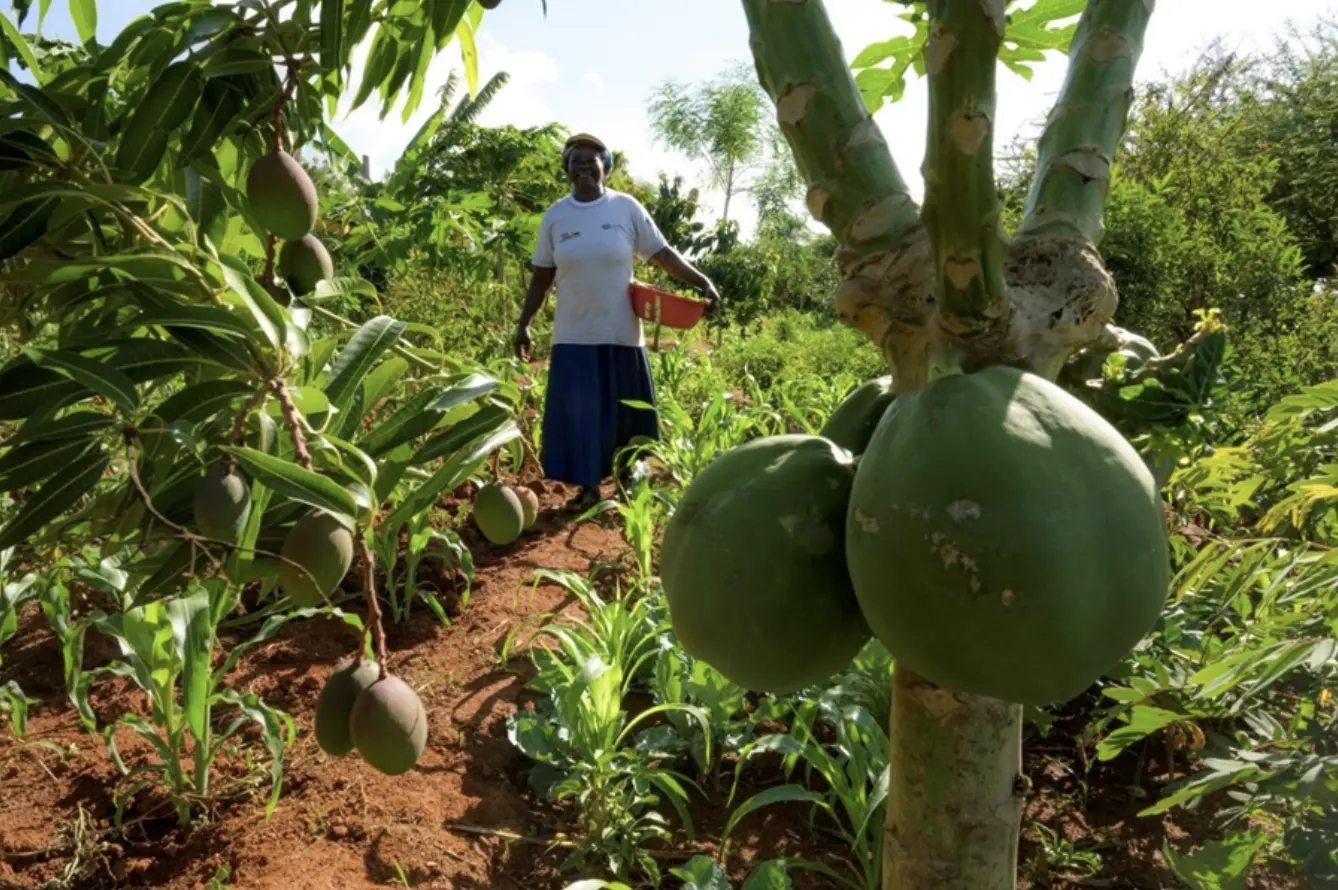Researchers have examined the socioeconomic viability of the suite of sustainable practices and given a green light for inclusion in countries’ NDCs.
Decades of unsustainable farming practices have led to loss of biodiversity, degradation of soils and landscapes, reduced production, and increased emissions of greenhouse gases. Recently, the increased awareness of the anthropogenic role in perpetuating the change in climate has led to adapting various practices and strategies that aid in building sustainable and resilient systems, particularly, through an agroecological approach.
Agroecology has been adopted as a strategy to address the current situation. The Food and Agriculture Organisation of the United Nations defines agroecology as ‘an integrated approach that simultaneously applies ecological and social concepts and principles to the design and management of food and agricultural systems. It seeks to optimize the interactions between plants, animals, humans and the environment while taking into consideration the social aspects that need to be addressed for a sustainable and fair food system.’
Put another way, agroecology combines sustainable agricultural practices, ecology, food, nutrition, and social sciences.
A research team including scientists from the Center for International Forestry Research and World Agroforestry (CIFOR-ICRAF) and others in their study, Agroecological principles and elements and their implications for transitioning to sustainable food systems. A review, which was published in Agronomy for Sustainable Development in October 2020, describe agroecology as being action-oriented, participatory and transdisciplinary. The team suggests a holistic view, that is, agroecology is a science, a set of practices and also a social movement.
The popularity of agroecology has been steadily increasing around the world, with various regions prone to land degradation adopting its approach as not only an adaptation strategy but also as a way to restore land. Yet little is known about agroecological practices and their impacts on labour, incomes and food security, for example.
To address this gap, the research team set out to examine the viability of agroecology in various settings, with a focus on improving livelihoods by assessing the socio-economic viability of the practices, as part of the project, Viability of Agroecological Practices across Africa, with support from the CGIAR Research Program on Forests, Trees and Agroforestry and the French Ministry for Europe and Foreign Affairs.
The project focuses on delving into 12 case studies within various regions of Burkina Faso, Ethiopia, Kenya, Madagascar, Malawi, Senegal, Tanzania and Tunisia.
The CIFOR-ICRAF-led case study in Eastern Kenya builds on the Drylands Restoration Project, which was funded by the International Fund for Agricultural Development and the European Commission, was implemented from 2016 to 2020, focusing on Machakos, Makueni and Kitui counties. The three Counties are characterised as arid and semi-arid with annual average rainfall ranging 200–400 mm. The agroecological practices being examined in these regions are soil and water conservation and various agroforestry options. These practices included planting basins, which are small pits dug to hold crops planted in them, application of composted manure, intercropping, crop rotation, and tree planting.
To understand the viability of the practices, 50 key-informant interviews were conducted within six sub-counties: Mbooni East, Kibwezi East in Makueni County, Kitui Rural, Mwingi Central in Kitui County, Mwala and Yatta in Machakos County. The informants ranged from farmers through government officials to the private sector and included people who were linked to the project or were influencers of agroecology.
The graph below shows the distribution of the informants, who were relatively equally distributed by category.

Farmers are the main stakeholders in agroecology because they directly practise and are directly affected. Their perspectives were captured in terms of what they see were the economic, social and environmental benefits of agroecology.

The economic benefits included increased food security because of the increased possibility of off-season production owing to the agroecological practice of soil and water conservation, including irrigation. Farmers also achieved greater profit margins owing to reduced labour requirements and the adoption of more precise agricultural practices, which increased production per unit area. Additionally, there was an increase in incomes from diversification of crops, such as from agroforestry. More income was assumed in the general community owing to the initial requirements of building dams and ponds, for example.
‘Household families embrace agroecology with activities such as agroforestry because it not only provides additional food at the moment but also provides opportunity for fuel for future,’ said Jasmine Mweu from Mwala.
Second, the team discovered that perceived social impacts were specific to the particular group, varying between men, women and youth. For women, availability of water and food from home gardens provided opportunities for other household activities. For young people, they only took part in activities that showed immediate results, such as working as field labour and in horticultural activities. For men, they focused on the heavier rainwater harvesting activities and received more income from supplying water to neighbours.
Off-season production ensured that households had food throughout the year, which led to an increase in general wellbeing. The introduction of more trees supplied spaces for recreation and shade for important communal gatherings and with the diversification of crops the community enjoyed better nutrition. Activities that included group work and the bringing together of farmers for training increased social interaction and cohesion.
‘There is increased social networks as farmers are constantly learning from each other about the different practices,’ said Zacharia Mula, a leading farmer in Yatta.
The team also found that agroforestry has both short- and long-term environmental benefits. For farmer, the immediate short-term benefits are those that are visible and show a change in their space. Farmers could have off-season food production owing to soil and water conservation. Diversification of crops allowed for improved nutrition and variety of diets as another immediate visible benefit.
Agroecology’s benefits also include increases in soil quality and better soil fertility through application of farmyard manure and better soil structure and root support via soil-protection practices.
Other people’s perceptions
The various people in the case study had varying understandings. A government official noted that, from his perspective, farmers are able to identify what they do as agroecological practices. An staff member of a non-governmental organisation noted that the choice of practice is influenced by socio-cultural norms guided by gender perspectives of labour. Economic status decides on which practice will be adopted, for example, availability of land. Meanwhile, a leading farmer who had been in various projects before the agroecology project was certain that the remedy for the effects of climate change was agroecology.
There were also differing opinions from some of the key informants. For example, there was a difference in the understanding of the benefits of the agroecological practices by users and by non-users. The informants who were not users, that is, extension agents, government officials, researchers, and NGO representatives saw things differently because they had background knowledge on agroecology and contextualised the benefits. The users had a focus on labour requirements and usage and economic returns.
Various interventions promoting agroecology in the area also played a large part in ensuring success. These included policies of the three counties that promoted sustainable agricultural practices in the Kenyan drylands. Other interventions included training farmers, supply of inputs including suitable seeds, establishment of local institutions including community-based organizations and farmers’ cooperatives, and government-led programmes that subsidized the training.
In conclusion, the research team argue that agroecology in practice has obvious environmental, economic and social benefits. Farmers are applying agroecology, adapting the practices that are suitable for their areas but may not be able to define precisely what agroecology is but speak according to their context, as the wordcloud below highlights.
The various interventions in the region have supported adoption of agroecology and promoted different practices, which are determined by labour requirements and cost.
The benefits of agroecology are, however, not in doubt. Donors and policy-makers should be confident in increasing their efforts in agroecology.
Looking forward to the United Nations Framework Convention on Climate Change’s Conference of the Parties (COP 27), set to take place in Sharm El-Sheikh, Egypt later in 2022, inclusion of agroecology as an adaptation mechanism in countries’ nationally determined contributions should be done as a matter of urgency.

This blog was originally published by ICRAF and written by Emily Ongus, who was a research associate in the Agroecology Viability Study in the Soil Systems group at ICRAF. Emily has an MSc in sustainable land management from Wageningen University and Research in The Netherlands and extensive work experience with smallholders in Kenya and Tanzania.

